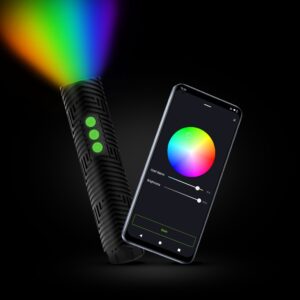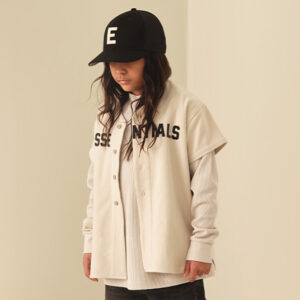Healthy intimacy isn’t just about physical pleasure — it’s about communication, understanding, and emotional closeness. More couples today are exploring new ways to connect on a deeper level, and one area that’s sparked curiosity in the sexual wellness community is the use of bondage toys. While the term might sound intimidating, in practice, these products are tools that can help couples build trust, enhance communication, and create a shared sense of discovery.
What Are Bondage Toys?
At their core, bondage toys are accessories used to explore light restraint, anticipation, and sensory play in a safe, consensual setting. They can include items like soft cuffs, blindfolds, silk ties, or adjustable straps that limit movement in gentle, non-threatening ways. Some people also use accessories like paddles or spreader bars, but the goal isn’t discomfort or domination — it’s to explore new sensations while maintaining complete respect for boundaries.
What makes bondage unique isn’t the toy itself but the intention behind it. When done with care and consent, it can actually strengthen trust between partners. The person being restrained must feel completely safe, while the other must act with empathy and awareness. This exchange fosters vulnerability, which in turn can deepen connection and communication.
The Role of Consent and Safety
Before introducing bondage toys into intimacy, open dialogue is essential. Consent isn’t just about saying “yes” — it’s about having an ongoing conversation where both partners feel heard and respected. Talk about what feels exciting, what feels off-limits, and what signals or words will mean “pause” or “stop.”
Creating this framework of trust transforms what might seem intimidating into something mutually empowering. It’s also important to establish aftercare — the period after the experience when partners reconnect emotionally, check in, and offer reassurance. This helps maintain emotional balance and ensures that both people leave the experience feeling safe and appreciated.
When practiced with respect and awareness, bondage can serve the same purpose as other forms of sexual exploration — promoting communication, body confidence, and shared satisfaction. Just as sex toys for women can help individuals understand their own pleasure and preferences, bondage accessories can help couples understand how trust and surrender play into deeper intimacy.
How Bondage Fits Into Sexual Wellness
Sexual wellness isn’t about pushing boundaries just for the sake of it. It’s about learning how to communicate, listen, and grow together. For many, bondage toys provide a structured way to explore vulnerability and balance power dynamics in a way that feels safe and freeing.
It’s also a chance to slow down and focus on sensations — texture, sound, anticipation, and emotion — instead of rushing through physical experiences. In that sense, bondage is as much psychological as it is physical. It teaches patience, mindfulness, and respect for limits.
Choosing Quality Products
When exploring bondage toys, quality and safety should always come first. Because these items come into direct contact with the skin, it’s important to choose products made from high-quality, body-safe materials like silicone, leather, or soft nylon. Avoid harsh materials, rough edges, or products that don’t clearly list their components.
Reputable brands also include proper safety guides and adjustable features, ensuring users have full control over pressure and restraint. The key is comfort and confidence — not pain or fear.
If you’re new to this space, start small. Simple accessories like a satin blindfold or a pair of padded cuffs can introduce you to the idea of trust and sensory play without feeling overwhelming. Over time, as comfort and communication grow, couples can explore more advanced accessories at their own pace.
Learning from Broader Sexual Wellness
Exploring bondage toys often helps people better understand their broader approach to intimacy. For example, someone who’s already familiar with sex toys for women may find that bondage elements add a new dimension of playfulness and emotional closeness.
This kind of experimentation isn’t about performing or meeting an ideal — it’s about curiosity, honesty, and learning more about yourself and your partner. In that sense, bondage becomes less about physical restraint and more about emotional freedom.
Tips for Safe Exploration
To make the experience safe and positive, here are a few practical tips:
-
Start simple: Begin with light restraints or blindfolds to build comfort. Avoid jumping into complex gear before understanding your comfort levels.
-
Use safe words: Always have a clear, easy-to-remember word or signal that means “stop immediately.”
-
Check in often: During and after, communication helps maintain safety and trust. Ask how your partner feels and adjust as needed.
-
Avoid pressure points: Never tie or fasten anything around the neck, joints, or areas that could restrict blood flow or breathing.
-
Prioritize aftercare: Take time afterward to reconnect, talk, and show affection. This emotional check-in is one of the most valuable parts of the experience.
The Bigger Picture: Emotional Connection Through Exploration
Bondage isn’t just about restraint — it’s about what happens when two people decide to trust each other completely. It requires mindfulness, empathy, and a shared understanding that intimacy goes far beyond the physical.
Exploring bondage toys can also challenge social stigma around sexual experimentation. It helps people realize that healthy intimacy is diverse and deeply personal. There’s no single “right” way to express connection, and what matters most is that both partners feel empowered and respected.
At the end of the day, sexual wellness is about authenticity. Whether you’re exploring gentle bondage or introducing new tools into your relationship, it all comes down to curiosity, consent, and care.




